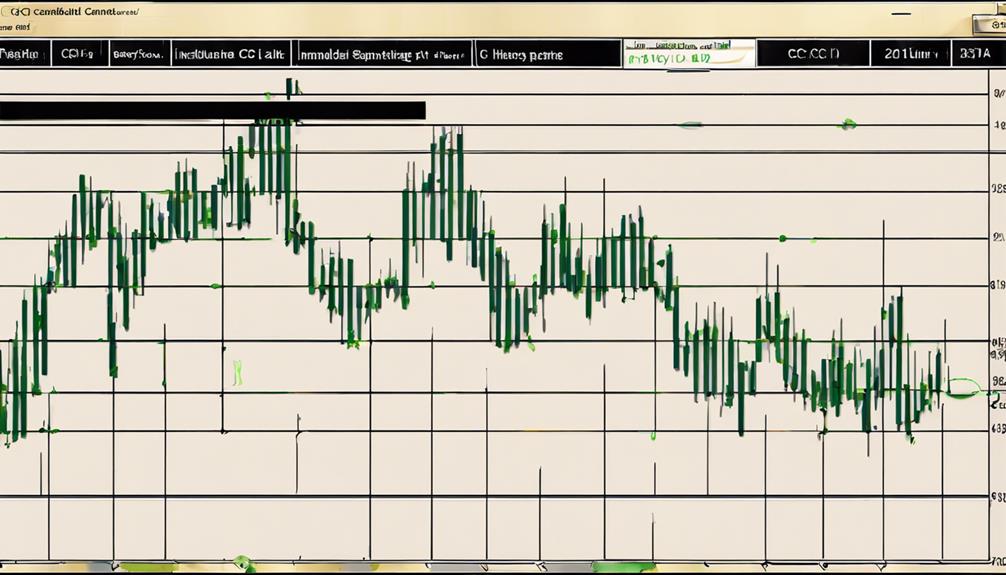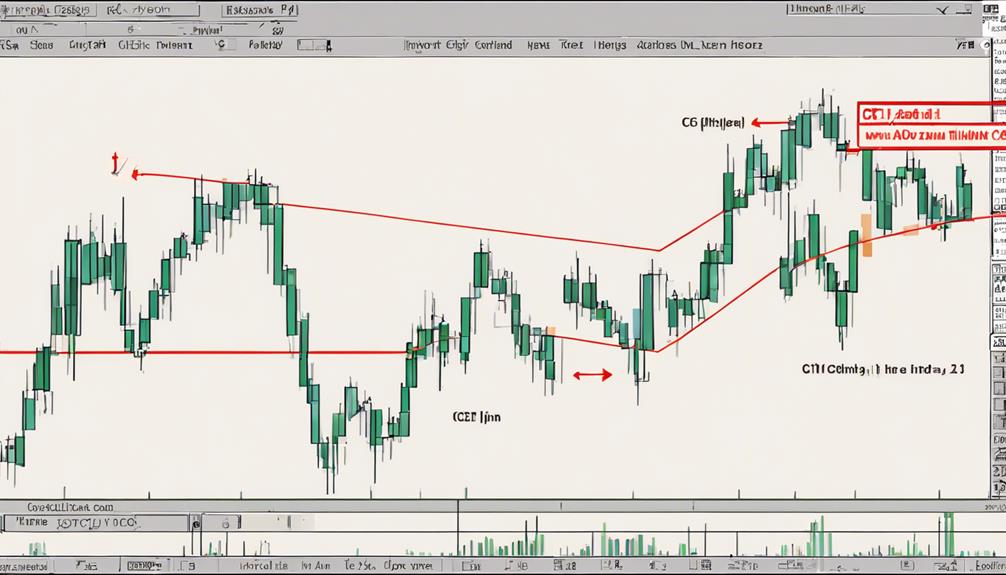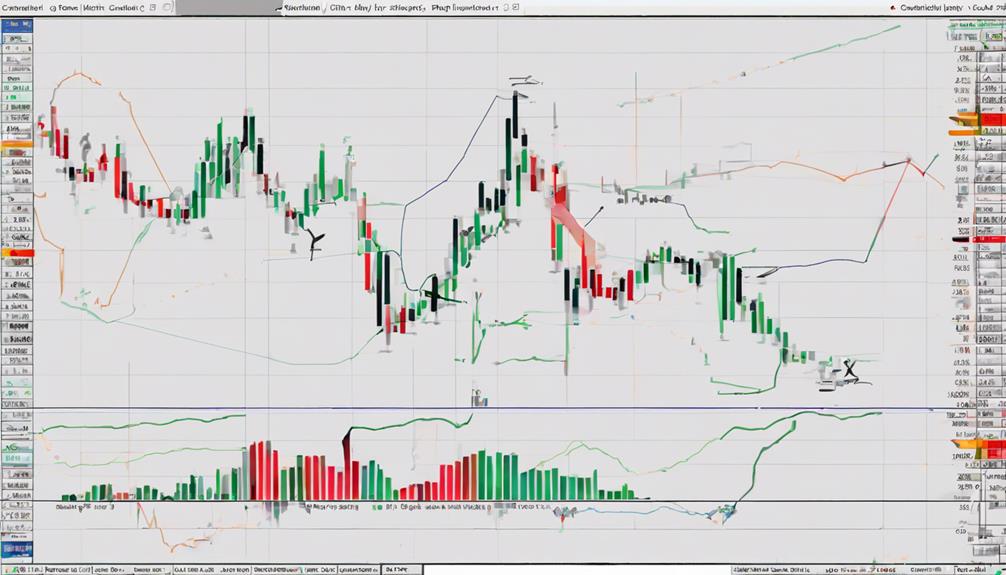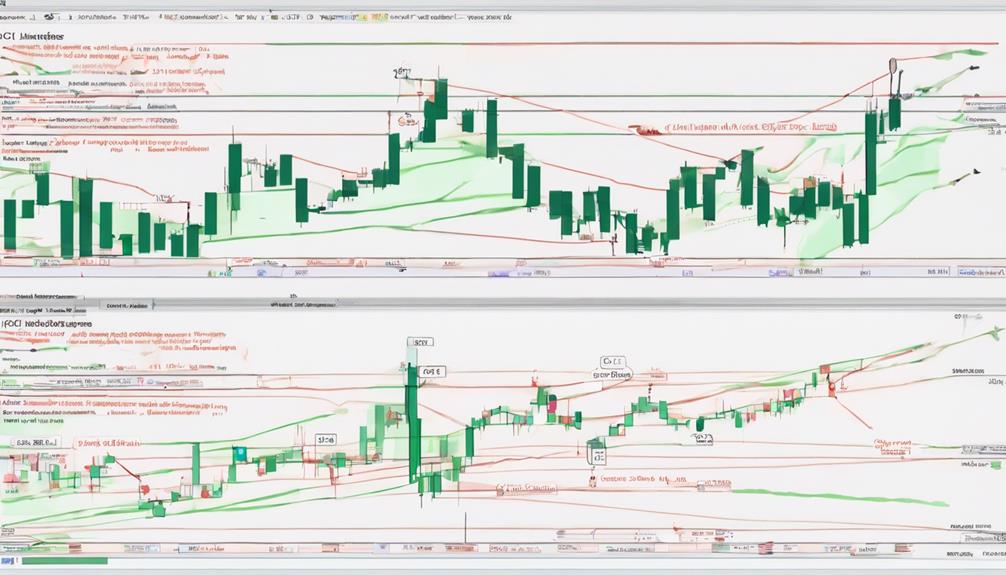The Commodity Channel Index (CCI) serves as a valuable tool for traders in the commodities market. It offers insights into price levels and potential market trends. Understanding how to calculate and interpret CCI signals can provide traders with a competitive edge in making informed decisions.
However, the nuanced nature of CCI's application requires a deeper exploration of its intricacies and practical implications. By exploring its functionalities, traders can harness the power of CCI to optimize their trading strategies and navigate the complexities of the commodities market more effectively.
Understanding Commodity Channel Index (CCI)
In commodities trading, understanding the Commodity Channel Index (CCI) is essential for evaluating price levels relative to historical averages. The CCI is a technical indicator that measures the current price level in relation to an average price level over a specified period. Traders use this indicator to identify potential overbought and oversold conditions in the market, which can signal buying or selling opportunities.
Developed by Donald Lambert, the CCI serves as a crucial tool for assessing price trend direction, strength, and possible reversal points in commodities trading. By analyzing the CCI alongside price movements, traders can spot trends and divergence, providing insights into potential trend reversals.
It is important to note that while the CCI is a valuable indicator, confirmation signals from other technical analysis tools are often recommended to validate trading decisions based on CCI readings. This ensures a more comprehensive and informed approach to interpreting the signals provided by the Commodity Channel Index.
Calculating the CCI Indicator

Understanding how to calculate the Commodity Channel Index (CCI) involves utilizing specific formulas and parameters that assess the relationship between current price levels and historical averages in commodities trading. The CCI formula incorporates the typical price, which is the average of high, low, and close prices, along with a simple moving average and mean deviation.
Lambert introduced a constant of 0.015 to scale CCI values. The mean deviation component in the CCI calculation reflects the volatility of a commodity, providing insights into potential price movements. By measuring the difference between the current price and historical average, the CCI helps traders identify overbought and oversold levels in commodities trading.
Understanding how these elements interact within the CCI equation is crucial for effectively interpreting the indicator's signals and making informed trading decisions based on volatility and price momentum.
Interpreting CCI Signals in Trading

Utilizing the Commodity Channel Index (CCI) signals in commodities trading requires a keen analysis of price trends and market dynamics to make informed trading decisions.
A CCI value above +100 indicates a strong uptrend, suggesting a buying opportunity for traders looking to capitalize on upward price momentum. Conversely, a CCI reading below -100 signifies a strong downtrend, signaling a selling opportunity for those seeking to profit from falling prices.
It is essential to confirm CCI signals with other technical analysis tools to enhance the accuracy of trading decisions. Traders should also adjust CCI levels based on the volatility of the security being traded to ensure a tailored analysis that accounts for specific market conditions.
Additionally, observing divergence between the CCI and price movements can provide valuable insights into potential reversals in commodity prices, offering traders an opportunity to adjust their positions accordingly. By incorporating these interpretations of CCI signals into their trading strategies, market participants can make more informed and strategic decisions in the commodities market.
CCI for Identifying Market Trends

The utilization of the Commodity Channel Index (CCI) for identifying market trends provides traders with a valuable tool for assessing price movements relative to average levels over specific time frames. Traders can effectively utilize CCI in commodities trading for various purposes:
- CCI helps traders identify market trends by comparing the current price level to the average price level over a specific period.
- Traders often look for CCI values exceeding +100 to signal a robust uptrend, indicating potential buying opportunities in the market.
- Conversely, CCI values below -100 suggest a significant downtrend, highlighting potential selling opportunities for traders.
- Divergence between the CCI and the price of an asset can indicate a weakening trend or a possible trend reversal, providing valuable insights for traders in making informed decisions.
Enhancing Trading Strategies With CCI

Drawing upon the insights gained from utilizing the Commodity Channel Index (CCI) to identify market trends, traders can now explore strategies to enhance their trading approaches with CCI in commodities trading. By leveraging CCI, traders can effectively pinpoint overbought and oversold conditions within the commodities markets, providing valuable entry and exit points. Moreover, CCI aids traders in recognizing potential trend reversals and gauging the strength of commodity price movements, offering essential information for informed decision-making.
To enhance trading strategies further, traders often combine CCI with other indicators to refine their analyses. For instance, pairing CCI with moving averages or volume indicators can provide additional confirmation signals, thereby increasing the reliability of trading decisions. Additionally, monitoring divergence between CCI and price movements is crucial, as disparities may indicate upcoming trading opportunities in commodities.
In essence, integrating CCI into trading strategies can offer traders a comprehensive view of market dynamics, enabling them to navigate the complexities of commodities trading with more precision and confidence.
How Does Commodity Channel Index Affect Commodities Trading in the Market?
The impact of commodity channel index on commodities trading is significant. This technical analysis tool helps traders identify potential price reversals and overbought or oversold conditions in the market. By using the CCI, traders can make more informed decisions and better anticipate the direction of commodity prices.
Frequently Asked Questions
What Is the Commodity Channel Index?
The Commodity Channel Index (CCI) is a momentum-based oscillator that evaluates overbought or oversold conditions by comparing the current price to a historical average. It provides trade signals based on trend strength, aiding in spotting reversals and trends.
What Is the Best Setting for the Commodity Channel Index?
The optimal setting for the Commodity Channel Index (CCI) varies based on market conditions. Traders commonly use a period of 14 for this indicator, but adjustments may be necessary for different markets. Experimentation is key to finding the most effective CCI setting.
What Is the Difference Between RSI and Commodity Channel Index?
The Relative Strength Index (RSI) and Commodity Channel Index (CCI) both gauge market momentum but differ in how they interpret price movements. RSI measures strength on a scale of 0-100, while CCI, unbounded, evaluates price levels relative to an average.
What Is Commodity Channel Index Chart Pattern?
A Commodity Channel Index (CCI) chart pattern is a technical analysis tool used in commodities trading to identify overbought and oversold conditions. It utilizes levels above +100 for uptrends and below -100 for downtrends, aiding traders in decision-making.
Conclusion
In conclusion, the Commodity Channel Index (CCI) serves as a valuable tool in commodities trading for identifying trends, overbought and oversold levels, and potential reversal points. Its calculation and interpretation help traders make informed decisions, although the subjective nature of CCI values requires confirmation with other technical analysis tools.
By incorporating CCI into trading strategies, market participants can enhance their ability to capitalize on buying and selling opportunities in the volatile commodities market.
